Recently I ordered a SiC-Cascode for burning it in my ofen...


A nice package for applications with higher voltages.
It also has a second source pin for more accurate gate control.
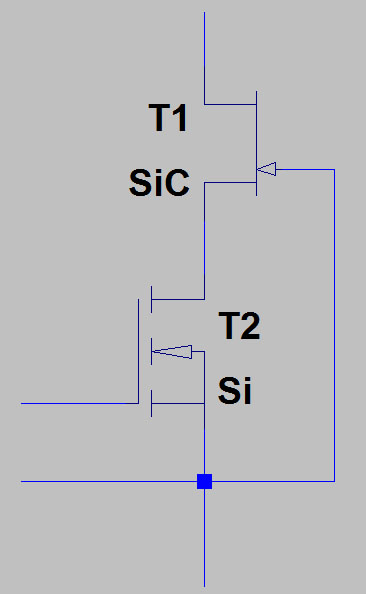
Manufacturing a SiC-J-FET is easier than a SiC-MOSFET. But for power electronics you usually want normaly off switches. Because of that UnitedSiC is building cascodes with a SiC-J-FET and a Si-MOSFET. With the Si-MOSFET we get the normal switching behaviour. Due to the SiC-J-FET the MOSFET has to carry the full current but only a small voltage.
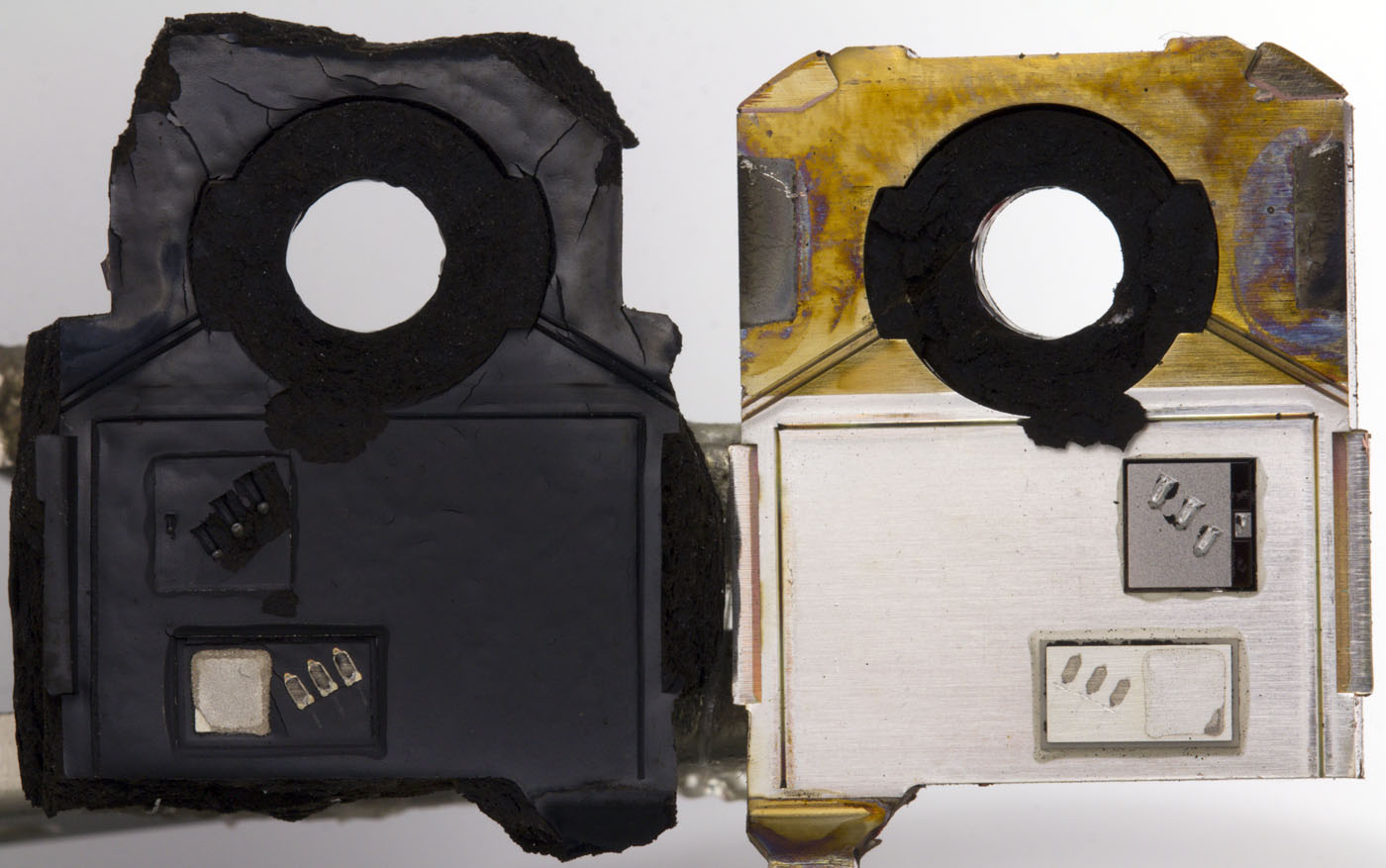
In the package we see the two dies. The lower MOSFET-die is still in the epoxy.

The MOSFET is placed on a ceramic insulator.
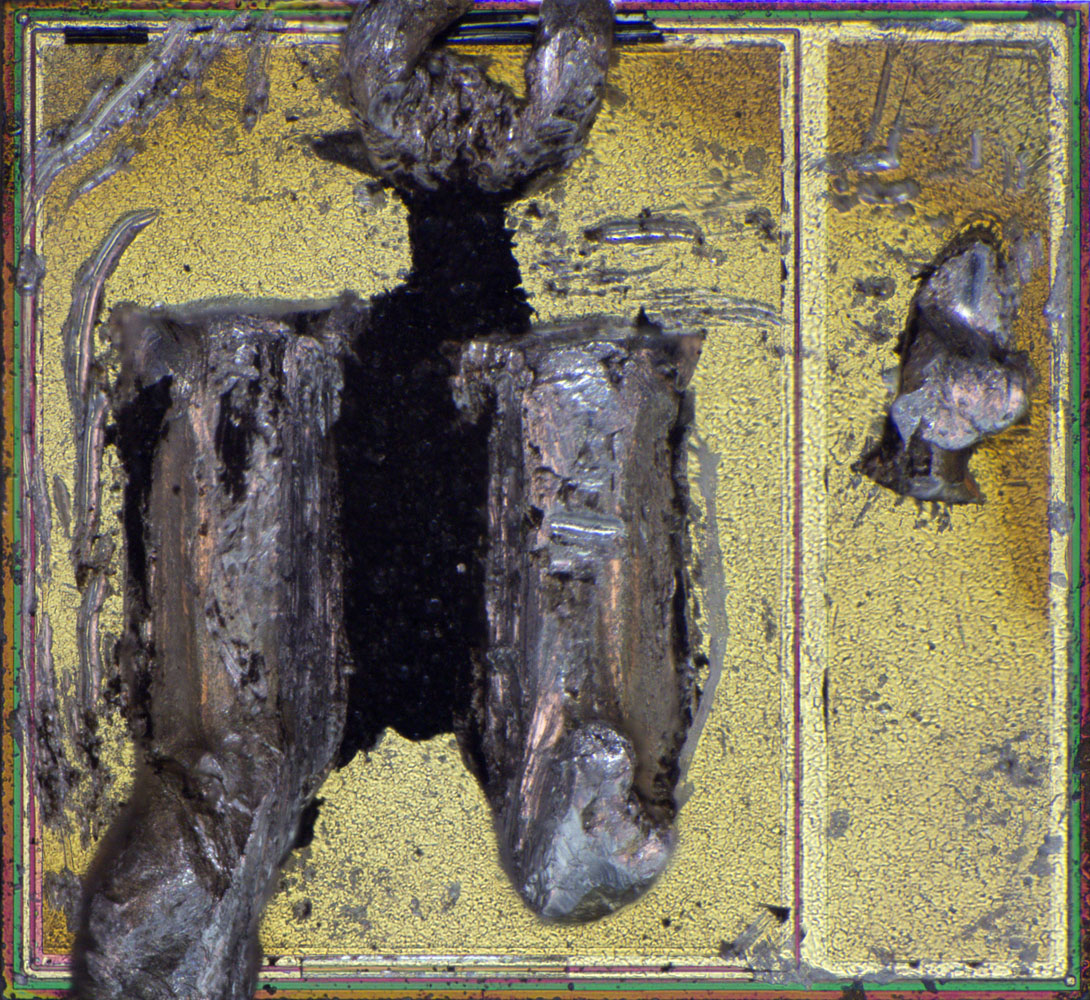
The MOSFET is quite small for this big bondwires!
It was not easy to clean the die and we can´t see very much of the mosfet. It´s clearly a low voltage mosfet because there is no bigger gap between the metal layer and the edge of the die.
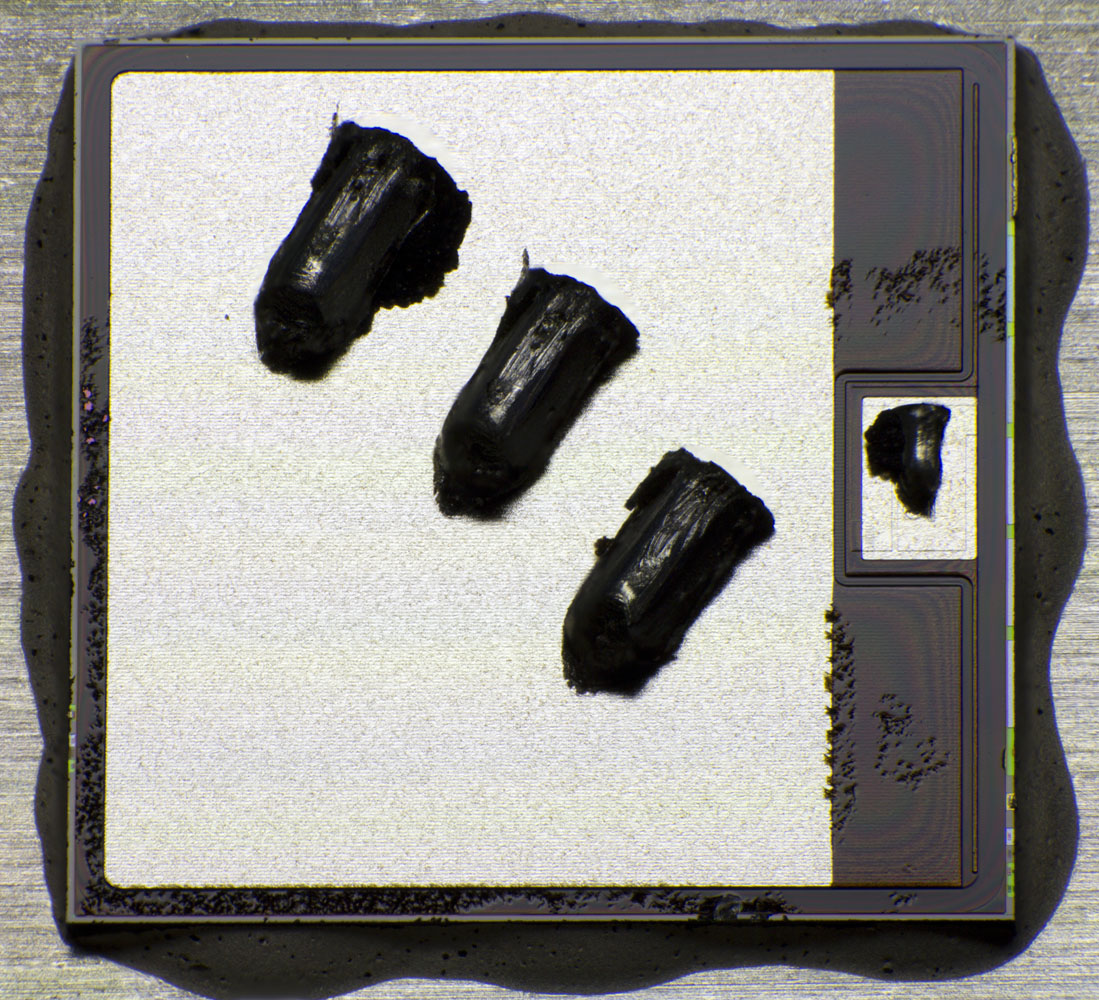
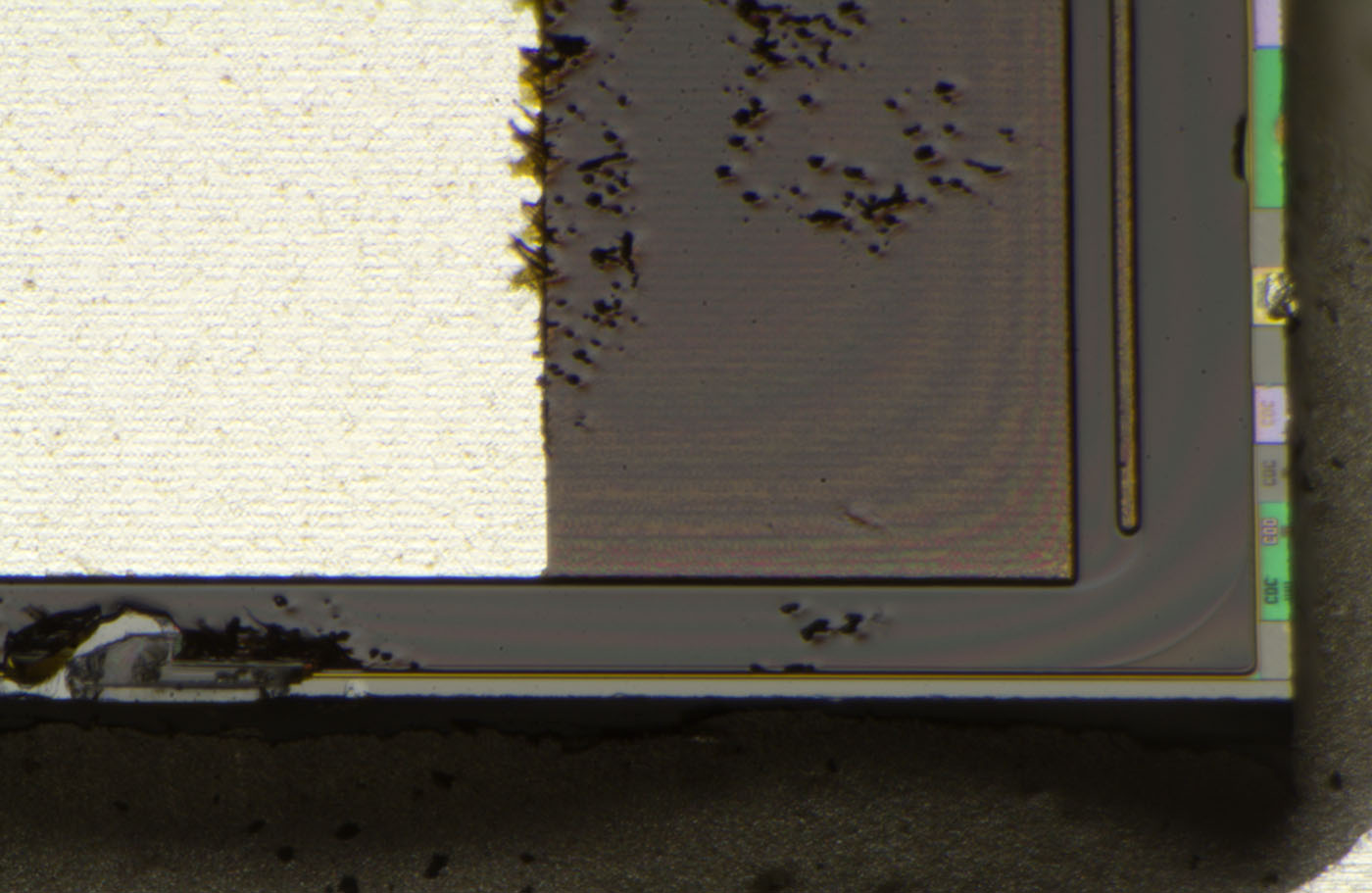
The SiC-FET-die is also not very spectacular, but...
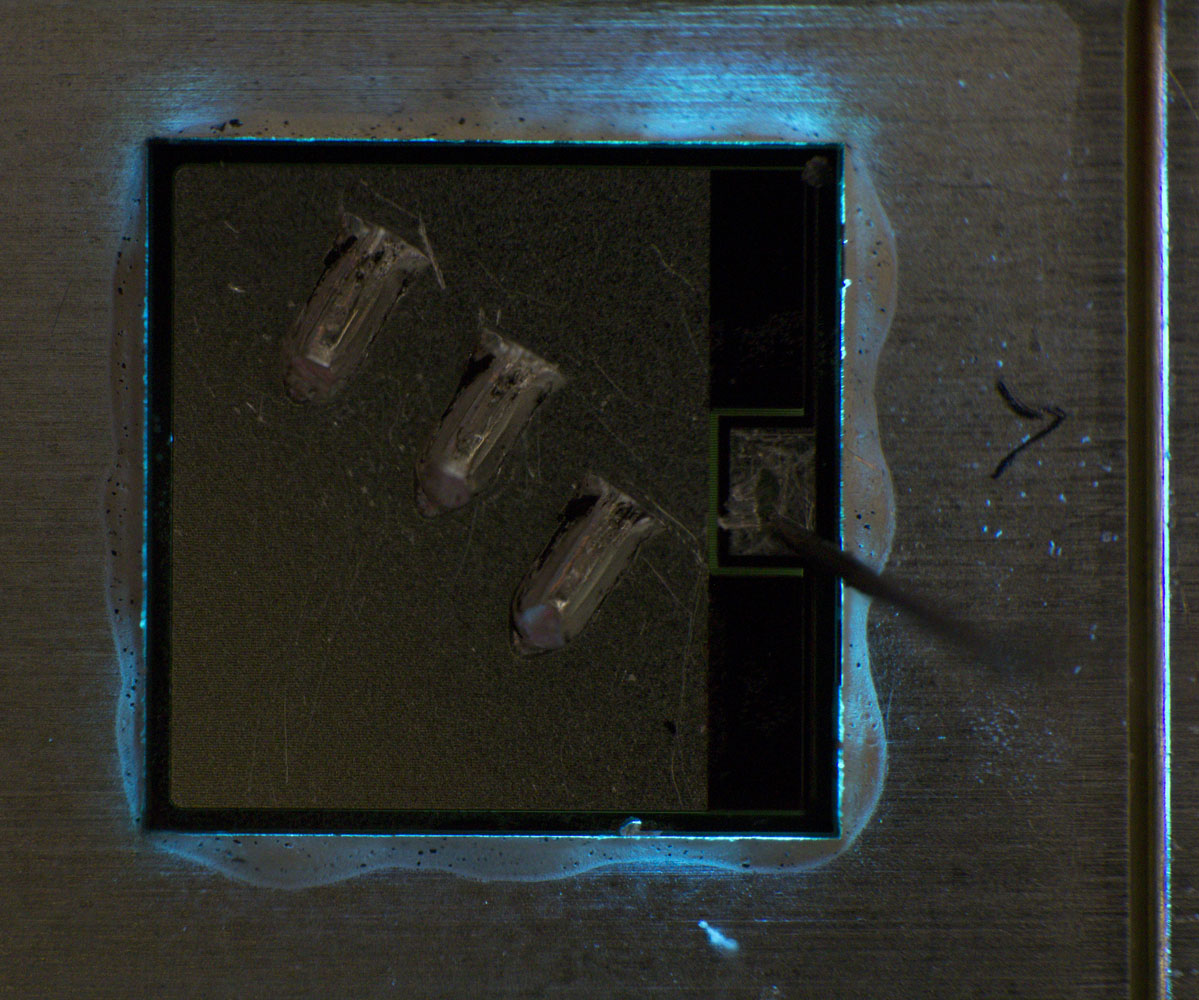

It glows blue when you put current over the gate-drain-junction!

1A in this picture.
The forward voltage is 3,5V which is enough for blue light.
https://richis-lab.de/FET05.htm 